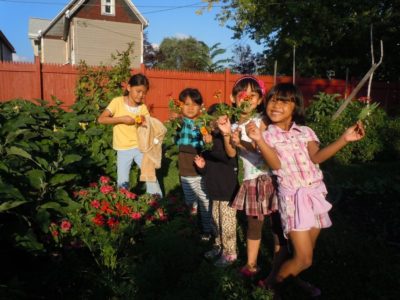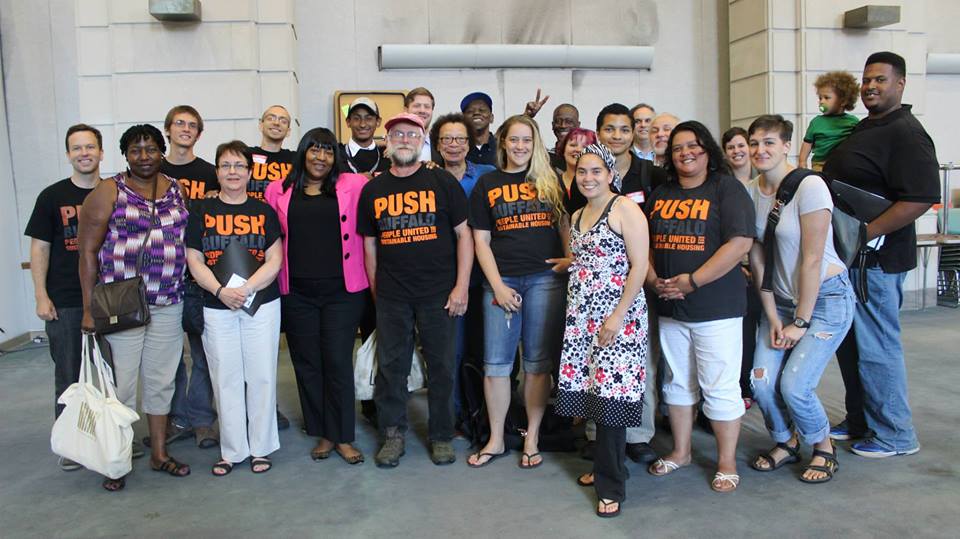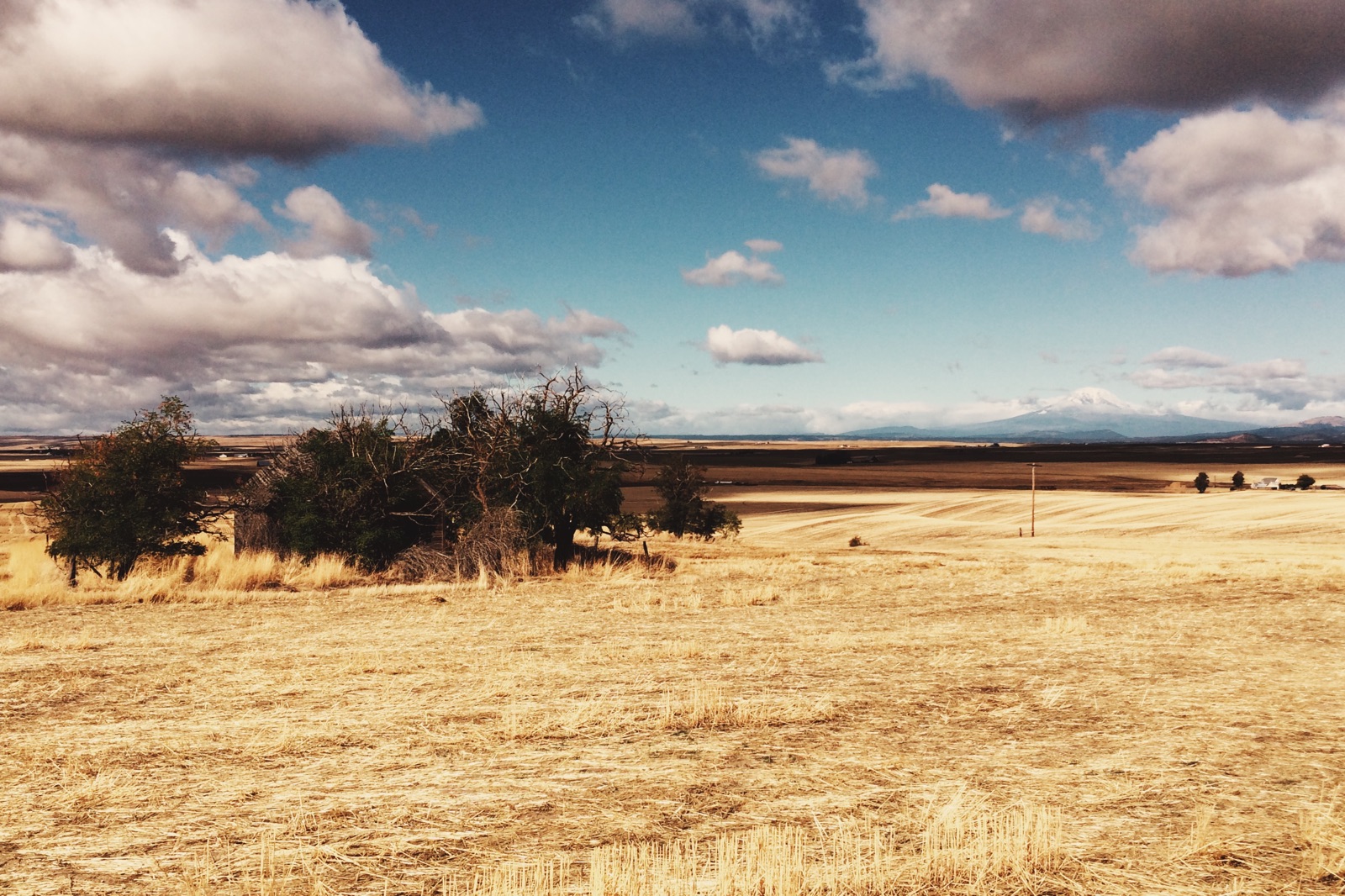When you think about Buffalo’s renaissance, you might envision the medical campus, Canalside, Larkinville, and construction downtown. You might also think about the investment dollars pouring into the West Side and its neighborhoods. How did a once lost area of the city turn into one of its biggest strengths? People. Many people. The energy and ambition of refugees, young people, and community activists is creating strong, inviting, and sustainable neighborhoods out of formerly blight stricken areas.
PUSH Buffalo is one such organization of community activists in the West Side approaching its 10 year anniversary. PUSH is making headlines this week for being awarded $900,000 in funding for its Sustainable Community Initiative which will involve solar panel installation in the West Side in an effort to create local jobs as well as more economic stability. Aaron Bartley, PUSH’s co-founder, and I sat down in the first week of December to chat about a changing Buffalo and PUSH’s mission within it.
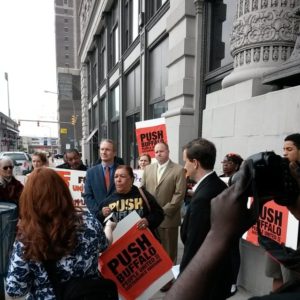
You may recall PUSH (People United for Sustainable Housing) from their exposure during Extreme Home Makeover’s trip to Buffalo’s West Side in 2009, and brief interviews in the popular Visit Buffalo Niagara promotional videos over the past few years.
Aaron and I spoke in a beautifully renovated storefront serving as a large conference room on Massachusetts Avenue in a vibrant neighborhood. Buffalo 2014 is much different than Buffalo 2005, when PUSH was founded by Bartley and Eric Walker. Nine years ago, the entire block was vacant and the district had a 25-30% vacancy rate as a whole.
“There was a dead park no one ever used, a bunch of dead public space no one ever used.”
So PUSH began to reclaim those vacant properties and residences from public and private owners. Not for the opportunity to profit, but for the opportunity to create a stronger neighborhood. The last ten years have been about building the culture of the neighborhood and renovating the buildings alongside that culture.
“From the get go, we realized that in development, you need a special plan. You can’t just throw up one building here, one there. It has to be coherent. So we defined a district of 20 blocks. We wanted to get to know the people and the conditions of the buildings before we did anything.
“We have successfully used all of the languages and cultures of the West Side as a strength in community building, not as a barrier to keep them in their own small groups.

“For three years we just met on a committee to plan a park – while doing housing renovation all along – and then the committee decided that doing 1-2 houses a year is not going to address the level of blight in the area. This year we’re doing 24 different buildings – from vacancy/disaster to really nice, affordable housing.
“One thing we always try to be clear about in our model is this – Real Estate is a funny game. So often developers come in and develop for people from outside of a neighborhood. It is such a class-based thing. If you have the money to pay the $1200 rent, that’s where you go. If you have the money for $400 rent, that’s where you go. We didn’t want to start building housing that would become inaccessible to people who were living here for 50 years or to incoming refugees – the people who made up the West Side.
“Making a good neighborhood isn’t always about replacing the people in that neighborhood. Instead it’s about changing the conditions under which people are living and making sure people take part in that change.”
So aside from creating affordable housing, and community centers that actually bring the community together, PUSH began providing job training. The workers on all of their sites were from within the community. The training those workers received qualified them for construction jobs elsewhere in the city. According to Bartley, PUSH has five of the best landscapers in the city, because of what they can do aesthetically, but also the engineering endeavors they take on in the community such as diverting water from the sewer system. There is a youth center with 60 kids in it every day, and job training and community involvement through their collaboration with the Massachusetts Avenue Project.
Once you’ve established a great, diverse neighborhood, what keeps an outside developer from coming in, gobbling up property, and raising rents?
“That’s a great question. It’s a question we ask ourselves a lot. Are we creating an incentive for the whole process to start over again? The basic strategy we use is that we’ve created a land trust. We’ve purchased a lot of property. We have 120 pieces of property in these blocks that are owned by the organization. That’s a great base for preserving affordability. That lets the market dictate that a single house couldn’t have a very high rent. However, if a middle class, wealthy family does move in, that contributes to the diversity of the block and it is welcome and encouraged.”
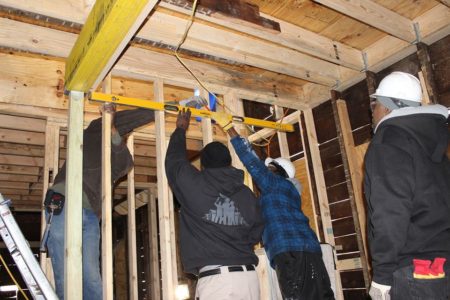
A changing Allentown is an example of gentrification going on in the city. Low rents supported the artistic nature of the neighborhood, and that was one of the main attractions of living there. Currently, Allentown’s apartment buildings, houses, and commercial spaces have caught the eye of to developers who would like to renovate and raise rents to attract doctors working nearby. We asked Aaron his thoughts about this transformation of a neighborhood.
“Well one of the greatest strengths of Buffalo is that you can live well as a young person just starting out. You have the time to be creative and be involved in your community because the cost of living allows that. I’m not looking forward to that day when the culture of grassroots Buffalo is lost. We don’t think that’s inevitable, and that’s what motivates us to keep doing the work we’re doing.”
You can also learn more and follow PUSH’s progress on Facebook.
